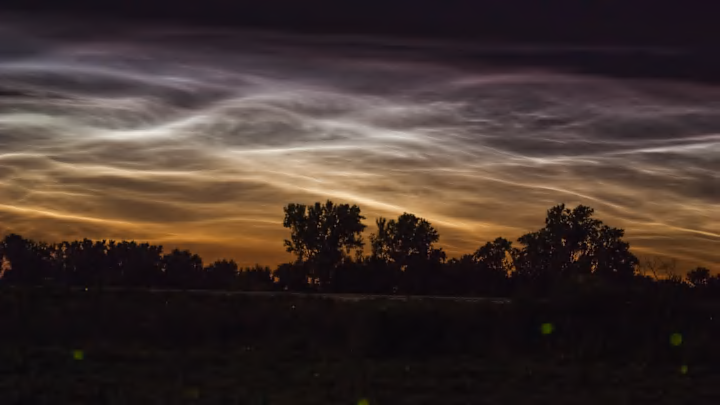Cumulus clouds, with their distinct cotton ball-like appearance, are what many people think of when they picture a classic sky. But clouds come in many forms, ranging from dazzling nacreous clouds clouds to tubular roll clouds. Noctilucent (“night-shining”) clouds are among the rarest, and scientists are calling upon citizens to help them study these meteorological wonders.
What Are Noctilucent Clouds?
According to Popular Science, these bluish, wispy clouds only form during summertime. They usually occur in the mesosphere (Earth’s third atmospheric layer), which sits about 50 miles above the planet’s surface. This lofty environment is why they’re sometimes known as space clouds. Temperatures in the mesosphere drop below -184°F at the North and South Poles during the summer months in both regions. These conditions are ideal for the formation of noctilucent clouds.
Where Are Noctilucent Clouds Visible?
Although the clouds most common in the polar regions, people have recently spotted them closer to the equator. Experts believe that human-related factors, such as climate change and rocket launches, may play a role.
Researchers at NASA are collecting amateur images of noctilucent clouds to better understand why they’re appearing at mid-to-lower latitudes. Royal Museums Greenwich shares that noctilucent clouds are hard to forecast, but you may be able to spot some if you live in an area where they’re common during the summer. Your best bet is to head somewhere with a clear view of the sky and a flat horizon—like an open field—about an hour or two after sunset or just before sunrise. To increase your chances, look westward about 40 minutes after the sun sets in the evening, or towards the east where the sun rises in the morning.
If you’re lucky enough to catch sight of these clouds, upload any pictures you capture of the rare phenomenon to the Space Cloud Watch website to help the research team at NASA.
Read More About Space:
